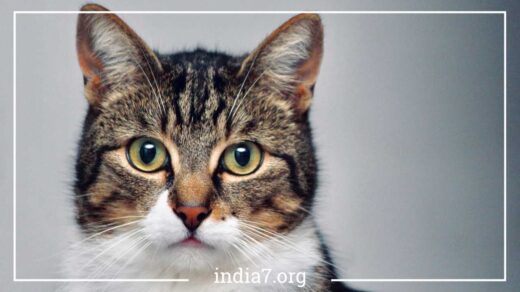Personality Of Golden Retriever: History, Temperament, and Care Guide

Personality Of Golden Retriever
The Golden Retriever is a remarkable dog breed that has captured the hearts of countless individuals around the world. Known for their friendly demeanor, striking appearance, and versatile abilities, Golden Retrievers are a breed of dogs that have earned a special place in the hearts of dog enthusiasts and families alike.
In this in-depth exploration, we will delve into the various characteristics that define the Golden Retriever, from their history and temperament to their physical attributes, unique abilities, and the responsibilities that come with caring for this beloved breed.
1. History and Origins of the Golden Retriever
To truly understand the characteristics of the Golden Retriever, it’s essential to start with their history and origins. The Golden Retriever’s story begins in Scotland during the mid-19th century. This breed was developed by crossing several dog breeds, including the Yellow Retriever, Bloodhound, Irish Setter, and Tweed Water Spaniel. The goal was to create a versatile hunting dog that excelled at retrieving game, especially waterfowl, in the rugged Scottish Highlands.
One of the key figures in the development of the breed was Lord Tweedmouth, whose passion for hunting led him to embark on a breeding program to create the ideal hunting retriever. The result was the Golden Retriever, a breed that not only displayed exceptional retrieving abilities but also had a pleasant and gentle disposition, making it well-suited to work closely with humans.
2. Physical Characteristics of the Golden Retriever
Golden Retrievers are easily recognizable due to their distinctive physical characteristics:
- Coat: They have a dense, water-resistant double coat that comes in various shades of gold, ranging from light cream to deep golden. Their fur is typically wavy or straight, with feathering on their tail, legs, and neck.
- Size: Golden Retrievers are a medium to large breed. Adult males typically stand between 23 to 24 inches (58 to 61 cm) tall at the shoulder, while females are slightly smaller, measuring 21.5 to 22.5 inches (55 to 57 cm).
- Weight: The weight of a Golden Retriever can vary depending on their sex. Males usually weigh between 65 to 75 pounds (29 to 34 kg), while females typically range from 55 to 65 pounds (25 to 29 kg).
- Build: These dogs have a well-balanced, muscular build with a strong and sturdy frame. Their tails are long and often described as “otter-like.”
- Expression: Golden Retrievers are known for their friendly and expressive faces. They have dark, intelligent eyes and a black nose.
These physical characteristics not only contribute to their visual appeal but also serve practical purposes, such as their water-resistant coat’s suitability for retrieving waterfowl.
3. Temperament and Personality Traits
One of the most remarkable characteristics of the Golden Retriever is their temperament. These dogs are known for their friendly, gentle, and affectionate nature. Here are some key personality traits that define the Golden Retriever:
- Friendly: Golden Retrievers are some of the friendliest dogs you’ll ever encounter. They tend to be outgoing and welcoming, whether meeting new people or other animals.
- Intelligent: This breed is highly intelligent, which makes them quick learners. Their intelligence, combined with a strong desire to please their owners, makes them relatively easy to train.
- Loving: Golden Retrievers form deep bonds with their families and thrive on human companionship. They are often referred to as “velcro dogs” because they enjoy being near their owners as much as possible.
- Playful: These dogs retain a playful and youthful demeanor throughout their lives. They love games, toys, and any form of interactive play.
- Patient: Golden Retrievers are remarkably patient, especially with children. They can tolerate a fair amount of handling and are known for being gentle with kids.
- Obedient: Due to their eagerness to please, Golden Retrievers are highly obedient. They are known to excel in obedience training and can perform a wide range of commands.
- Loyal: Once a Golden Retriever forms a bond with their owner, they remain loyal and devoted throughout their lives. They are often described as “heart dogs” because of the deep emotional connection they develop with their humans.
- Alert: While they are generally friendly, Golden Retrievers also make excellent watchdogs. They are alert and will bark to alert their owners of any potential intruders or unusual activities.
4. Unique Abilities and Talents
Golden Retrievers are not only known for their charming personalities but also for their impressive skills and abilities. These abilities stem from their origins as hunting dogs, and they continue to excel in various roles today:
- Retrievers Extraordinaire: As the name suggests, Golden Retrievers excel at retrieving objects. They have a “soft mouth,” meaning they can pick up and carry items without damaging them. This characteristic made them ideal for retrieving game for hunters.
- Water Lovers: Golden Retrievers have a natural affinity for water. They are strong swimmers and enjoy activities like swimming, playing fetch in the water, and even participating in water-based dog sports.
- Working Dogs: Beyond being family pets, Golden Retrievers have proven their worth in various working roles. They are often used as guide dogs for the visually impaired, therapy dogs, search and rescue dogs, and as assistance dogs for individuals with disabilities.
- Exceptional Nose: Golden Retrievers have a keen sense of smell, which makes them adept at scent detection tasks. They are often employed in search and rescue operations to locate missing persons.
- Competitive Spirit: These dogs thrive in competitive settings. They are frequently seen participating and excelling in dog sports such as agility, obedience, and dock diving.
- Service Dogs: Due to their friendly nature and ability to learn complex tasks, Golden Retrievers are often trained as service dogs to assist individuals with various disabilities, including physical and emotional support.
5. Responsibilities of Golden Retriever Ownership
While Golden Retrievers possess numerous desirable characteristics, it’s essential to recognize the responsibilities that come with owning one of these beloved dogs. Here are some key aspects to consider:
- Exercise Needs: Golden Retrievers are an active breed that requires regular exercise to stay healthy and happy. Daily walks, playtime, and mental stimulation are crucial for their well-being.
- Social Interaction: These dogs thrive on social interaction with their owners and can suffer from separation anxiety if left alone for extended periods. It’s essential to ensure they are included in family activities and receive plenty of attention.
- Training and Obedience: Although they are intelligent and eager to please, Golden Retrievers still require consistent training and positive reinforcement. Early socialization and obedience training are vital to prevent behavioral issues.
- Grooming: Their dense coat requires regular grooming to prevent matting and maintain its water-resistant properties. Brushing a Golden Retriever at least a few times a week is recommended.
- Healthcare: Routine veterinary care, vaccinations, and preventive measures such as flea and tick prevention are essential to keep your Golden Retriever healthy. This breed can be prone to certain health issues, including hip dysplasia and cancer, so regular check-ups are crucial.
- Diet and Nutrition: Providing a balanced diet and monitoring their weight is important for Golden Retrievers to prevent obesity, which can lead to various health problems.
- Safety: Due to their friendly nature, Golden Retrievers may be overly trusting of strangers. It’s important to ensure their safety by supervising interactions and keeping them on a leash when necessary.
6. Golden Retrievers as Family Dogs
One of the most endearing characteristics of Golden Retrievers is their suitability as family dogs. They are known for their loving and gentle nature, making them excellent companions for households with children. Here’s why they are often considered a top choice for families:
- Child-Friendly: Golden Retrievers are renowned for their patience and tolerance, especially with children. They tend to be gentle and playful, making them ideal playmates for kids of all ages.
- Protective Instinct: While they are typically friendly, Golden Retrievers have a protective instinct that can provide a sense of security to families. They are alert and will alert their owners to any potential dangers.
- Bonding: Golden Retrievers form strong bonds with their families, often becoming a cherished member of the household. They thrive on the love and attention they receive from their human companions.
- Activity Partners: These dogs are active and enjoy outdoor activities, making them great partners for family adventures like hiking, camping, or playing in the yard.
- Social Skills: Golden Retrievers’ friendly disposition makes them well-suited for socializing with other dogs and pets, adding to the harmony in a multi-pet household.
7. The Golden Retriever’s Role as a Working Dog
While many Golden Retrievers are beloved family pets, it’s essential to acknowledge their continued contributions as working dogs. Their intelligence, versatility, and willingness to learn make them invaluable in various working roles:
- Guide Dogs: Golden Retrievers are often chosen as guide dogs for the visually impaired due to their intelligence and gentle temperament. They help their handlers navigate the world safely and independently.
- Therapy Dogs: These dogs are natural comforters and excel as therapy dogs in various settings, such as hospitals, nursing homes, and schools. Their presence provides emotional support and uplifts the spirits of those they interact with.
- Search and Rescue: Golden Retrievers have been trained for search and rescue missions. Their keen sense of smell, agility, and determination make them valuable assets in locating missing persons in challenging environments.
- Assistance Dogs: Golden Retrievers are also used as assistance dogs for individuals with physical disabilities. They can perform tasks like retrieving items, opening doors, and providing stability to those in need.
- Detection Work: With their exceptional sense of smell, Golden Retrievers are employed in detection work, including sniffing out drugs, explosives, and contraband.
8. The Golden Retriever’s Love for Water
Golden Retrievers have an innate love for water that is deeply ingrained in their heritage. This love for water can be attributed to their ancestry, which includes water-loving breeds like the Tweed Water Spaniel. Here’s why Golden Retrievers are often referred to as “water dogs”:
- Strong Swimmers: Golden Retrievers are strong and confident swimmers. Their powerful limbs and water-resistant coat make them well-suited for activities in the water, whether it’s retrieving objects from a pond or enjoying a swim at the beach.
- Natural Retrievers: Their history as hunting dogs involved retrieving waterfowl, which required them to swim in various conditions. This natural retrieving instinct remains strong in the breed today.
- Water-Based Activities: Golden Retrievers revel in water-based activities, such as playing fetch in the water, diving into lakes, or participating in dock diving competitions. These activities not only provide exercise but also cater to their love for water.
- Mud Enthusiasts: While water is their primary attraction, Golden Retrievers are also known for their penchant for mud. If there’s a mud puddle nearby, you can expect them to find it and revel in it.
9. The Golden Retriever’s Adaptation to Climate
Golden Retrievers are generally adaptable to various climates, but it’s important to consider their needs in different weather conditions. Here’s how they cope with specific climate challenges:
- Heat Tolerance: Golden Retrievers typically tolerate heat well, but precautions must be taken in hot weather. They have a dense coat that can make them susceptible to overheating. Ensure they have access to shade, plenty of water, and a cool place to rest during hot summer days. Avoid overexertion in extreme heat.
- Cold Tolerance: Their double coat provides insulation against cold temperatures, making them well-suited for colder climates. However, it’s essential to protect them from extreme cold, especially if they are exposed to freezing conditions or icy surfaces. Consider using a dog coat to keep them warm in chilly weather.
- Seasonal Changes: Golden Retrievers may shed their coat seasonally, typically in the spring and fall. Regular brushing during these times can help manage shedding and keep their coat in good condition.
- Preventing Frostbite: When it’s extremely cold, it’s crucial to protect their paws from frostbite. You can use dog boots or ensure they don’t spend prolonged periods on icy surfaces.
- Water Activities: If you enjoy water activities with your Golden Retriever, ensure the water is safe and not too cold, especially during the colder months. Hypothermia can be a concern if they spend extended periods in cold water.
10. Caring for a Golden Retriever
Owning a Golden Retriever comes with a set of responsibilities to ensure their health, happiness, and well-being. Here are some important aspects of caring for your Golden Retriever:
- Nutrition: Providing a balanced diet tailored to their age, activity level, and specific dietary needs is essential. Consult your veterinarian for guidance on choosing the right dog food.
- Exercise: Golden Retrievers require regular exercise to maintain their physical and mental health. Daily walks, playtime, and activities like fetch or agility can help meet their exercise needs.
- Grooming: Their thick, double coat requires regular grooming to prevent mats and tangles. Brushing a Golden Retriever several times a week helps distribute oils, remove loose fur, and maintain a healthy coat.
- Healthcare: Regular veterinary check-ups are essential for vaccinations, preventive care, and early detection of health issues. Discuss with your veterinarian about specific health concerns that may affect Golden Retrievers, such as hip dysplasia or cancer.
- Training: Consistent training and socialization from a young age are crucial for a well-behaved Golden Retriever. Positive reinforcement techniques work well with this breed.
- Social Interaction: Golden Retrievers thrive on social interaction. Spend quality time with them, include them in family activities, and provide mental stimulation through interactive toys and puzzles.
- Safety: Ensure their safety by providing a secure environment, using a leash when necessary, and supervising interactions with other pets and children.
11. Conclusion: The Golden Retriever’s Enduring Appeal
In conclusion, the Golden Retriever is a breed that stands out for its exceptional characteristics, making it a beloved choice for families, working roles, and dog enthusiasts worldwide. Their history as versatile hunting dogs has evolved into a legacy of loyalty, love, and dedication to their human companions.
Golden Retrievers’ friendly and affectionate nature, combined with their intelligence and versatility, make them adaptable to various roles and environments. Whether they are working as guide dogs, providing therapy and support, or simply being cherished family pets, Golden Retrievers leave an indelible mark on the lives of those lucky enough to share their journey.
Their love for water, patience with children, and eagerness to please make them a truly special breed. However, it’s important to remember that with their many virtues come responsibilities. Proper care, training, and attention are essential to ensure that your Golden Retriever lives a happy and fulfilling life, one that mirrors the joy and devotion they bring to the lives of their owners.



